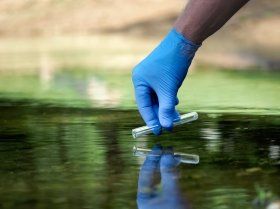Like many engineers, Ravi Selvaganapathy, McMaster’s Canada Research Chair in Biomicrofluidics, enjoys a challenge – the thornier, the better. His work focuses on developing small machines and tools (the “micro” in “biomicrofluidics”) and using them to improve medicine, biology and human health (the “bio”).
His latest project is about as thorny as it gets: a three-year, $1.8 million project funded by the University of Saskatchewan’s Global Water futures project to develop water sensors that can be used in resource-poor areas.
It’s not like he hasn’t already tackled some tough problems. He’s involved in a long-running project to create an artificial placenta, which will help pre-term babies with underdeveloped lungs breathe without using a potentially damaging external respirator. He’s figured out tiny devices to immobilize and examine worms and flies used in medical testing. And he’s working on 3D printers that work not with plastics, but with soft materials like gels and matrices complete with cells and vascular networks.
He’s definitely looking forward to solving the puzzles his current project presents. In part, this is because testing water is complicated. Unlike a substance like blood, which has fairly well-defined components, the composition of water can be highly variable and testing requirements are much more stringent.
Continue reading at McMaster University.
Image via McMaster University.


